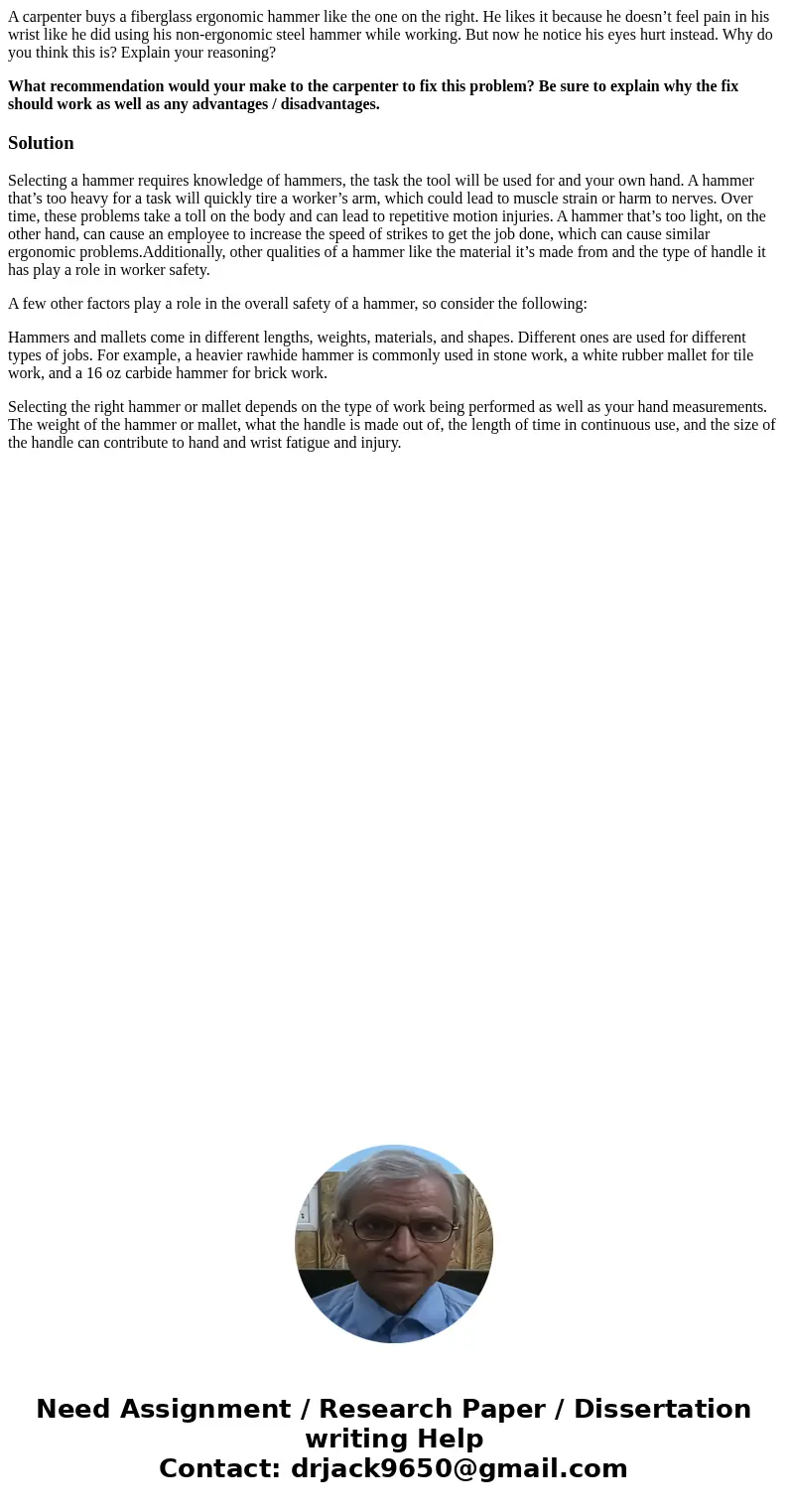A carpenter buys a fiberglass ergonomic hammer like the one
A carpenter buys a fiberglass ergonomic hammer like the one on the right. He likes it because he doesn’t feel pain in his wrist like he did using his non-ergonomic steel hammer while working. But now he notice his eyes hurt instead. Why do you think this is? Explain your reasoning?
What recommendation would your make to the carpenter to fix this problem? Be sure to explain why the fix should work as well as any advantages / disadvantages.
Solution
Selecting a hammer requires knowledge of hammers, the task the tool will be used for and your own hand. A hammer that’s too heavy for a task will quickly tire a worker’s arm, which could lead to muscle strain or harm to nerves. Over time, these problems take a toll on the body and can lead to repetitive motion injuries. A hammer that’s too light, on the other hand, can cause an employee to increase the speed of strikes to get the job done, which can cause similar ergonomic problems.Additionally, other qualities of a hammer like the material it’s made from and the type of handle it has play a role in worker safety.
A few other factors play a role in the overall safety of a hammer, so consider the following:
Hammers and mallets come in different lengths, weights, materials, and shapes. Different ones are used for different types of jobs. For example, a heavier rawhide hammer is commonly used in stone work, a white rubber mallet for tile work, and a 16 oz carbide hammer for brick work.
Selecting the right hammer or mallet depends on the type of work being performed as well as your hand measurements. The weight of the hammer or mallet, what the handle is made out of, the length of time in continuous use, and the size of the handle can contribute to hand and wrist fatigue and injury.

 Homework Sourse
Homework Sourse